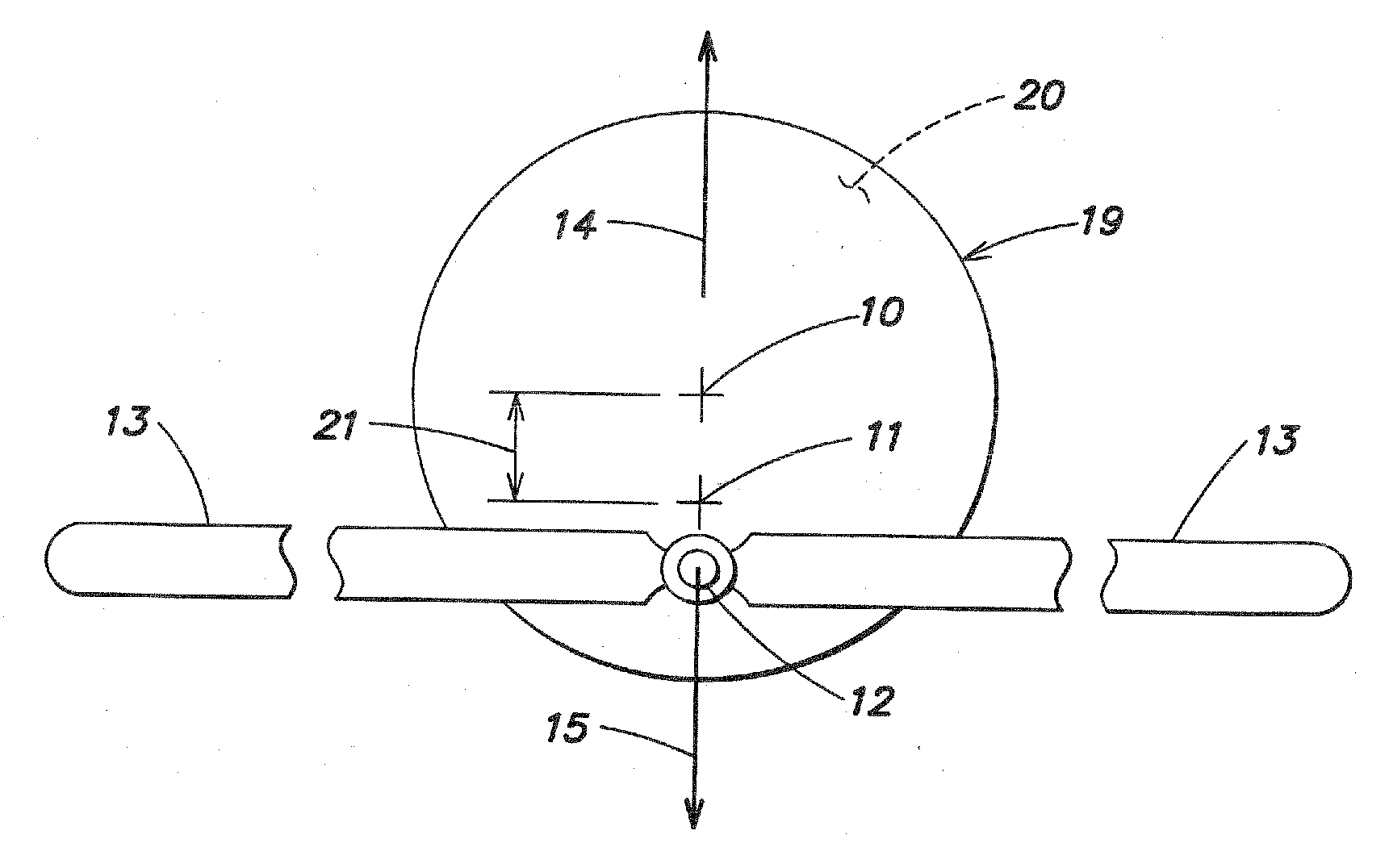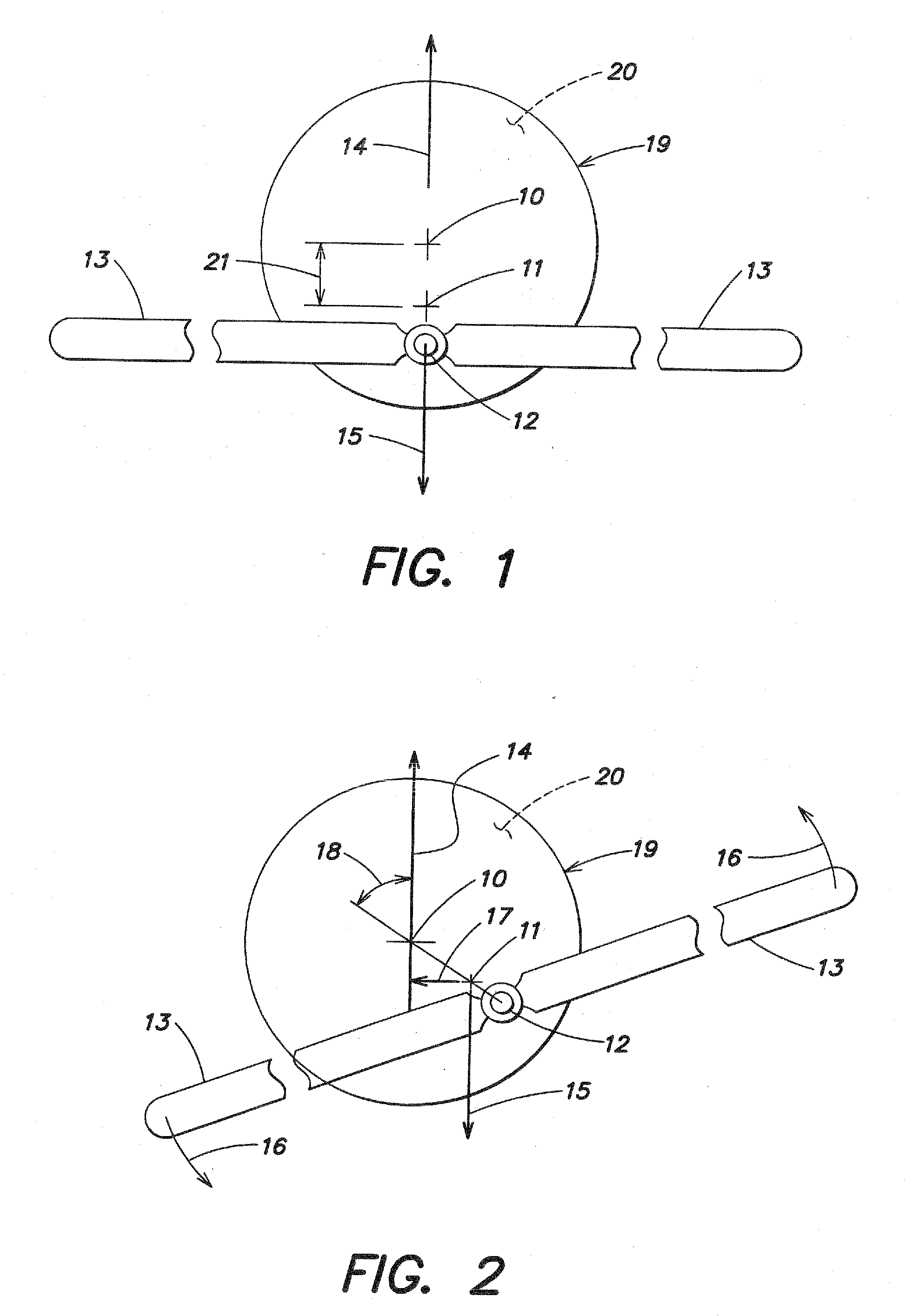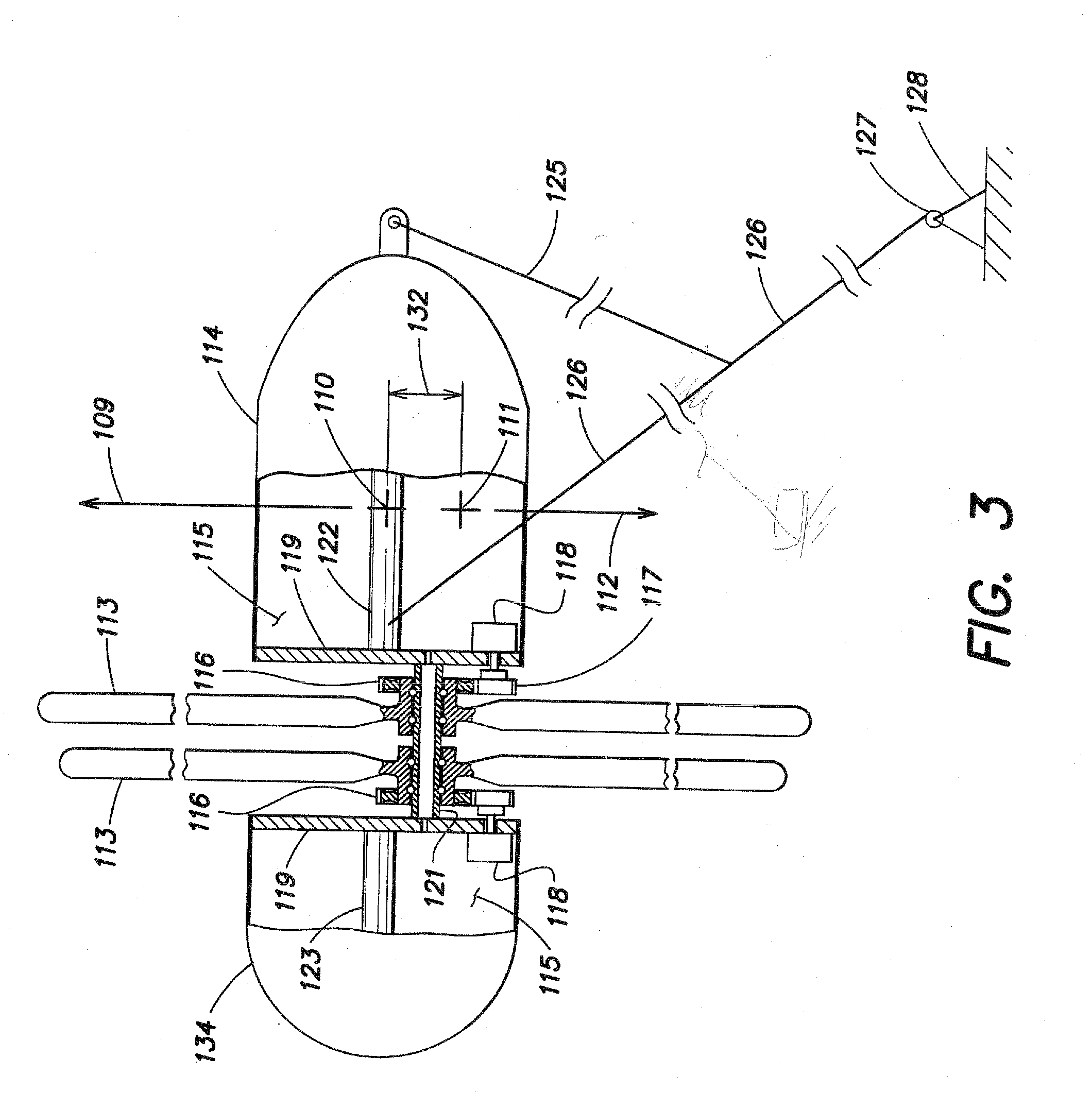Airborne stabilized wind turbines system
a wind turbine and stabilizer technology, applied in the field of wind turbine systems, can solve the problems of limited land for building the towers to support such wind turbines, high construction cost, and high vibration, and achieve the effects of accurate and complicated angular controller, low cost, and simple and reliable way
- Summary
- Abstract
- Description
- Claims
- Application Information
AI Technical Summary
Benefits of technology
Problems solved by technology
Method used
Image
Examples
second embodiment
[0058]In this second embodiment of the invention, the wind turbine section includes at least one wind turbine, but can include a few wind turbines wherein part of them will rotate in the opposite direction from the rest. The turbine section of this embodiment is connected by a tether to the lifting section, and by another tether to the anchoring section.
[0059]The lifting section: 214 is a lifting body that is filled with lighter than air gas 215, like helium, hydrogen, hot air or any other lighter than air gas. The lifting body 214 has an aerodynamic shape so when the wind 240 is blowing over the lifting body 214, there is an additional lifting force acting on the lifting body 214. The lifting body 214 is connected to the turbine section of the system through a tether 225.
[0060]In the turbine section, 221 is the main shaft, this is preferably a cylindrical hollow tube that gives a constructional strength to the turbine section; it is made preferably from composite material or from o...
third embodiment
[0080]FIG. 10 is a side view partly cross section of the present invention.
[0081]In this embodiment, there are a plurality of turbines sections that are connected by tether 226 in a serial formation. The upper turbines section is connected to the lifting section, and lower turbines section is connected to the anchoring base 228 preferably through winch 227 that can control the operational altitude of the plurality of turbine sections.
[0082]Each turbine section, the lifting section, and the anchoring base are similar to those shown in FIGS. 6-8.
[0083]The advantages of this embodiment are: harvesting of wind energy in multiples altitudes by the same system; the cost of electricity output will be lower.
[0084]The disadvantage is: the system is more complicate to control and to maintain.
[0085]FIG. 11 shows a possible lifting section that can generate the lifting force to the airborne system, in different embodiments of the invention.
[0086]Element 327 is an air foil lifter kite; 314 are i...
PUM
 Login to View More
Login to View More Abstract
Description
Claims
Application Information
 Login to View More
Login to View More - R&D
- Intellectual Property
- Life Sciences
- Materials
- Tech Scout
- Unparalleled Data Quality
- Higher Quality Content
- 60% Fewer Hallucinations
Browse by: Latest US Patents, China's latest patents, Technical Efficacy Thesaurus, Application Domain, Technology Topic, Popular Technical Reports.
© 2025 PatSnap. All rights reserved.Legal|Privacy policy|Modern Slavery Act Transparency Statement|Sitemap|About US| Contact US: help@patsnap.com



